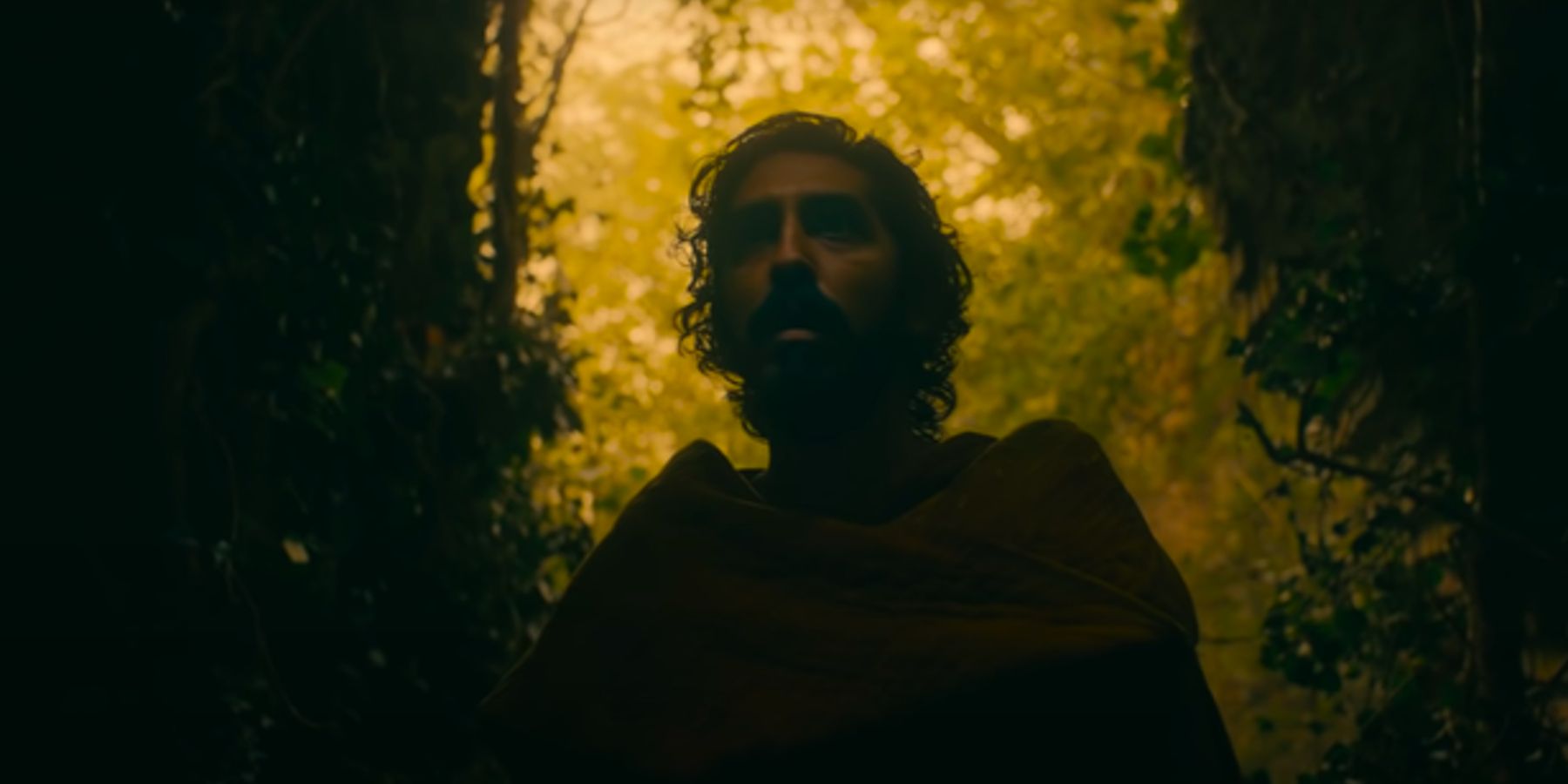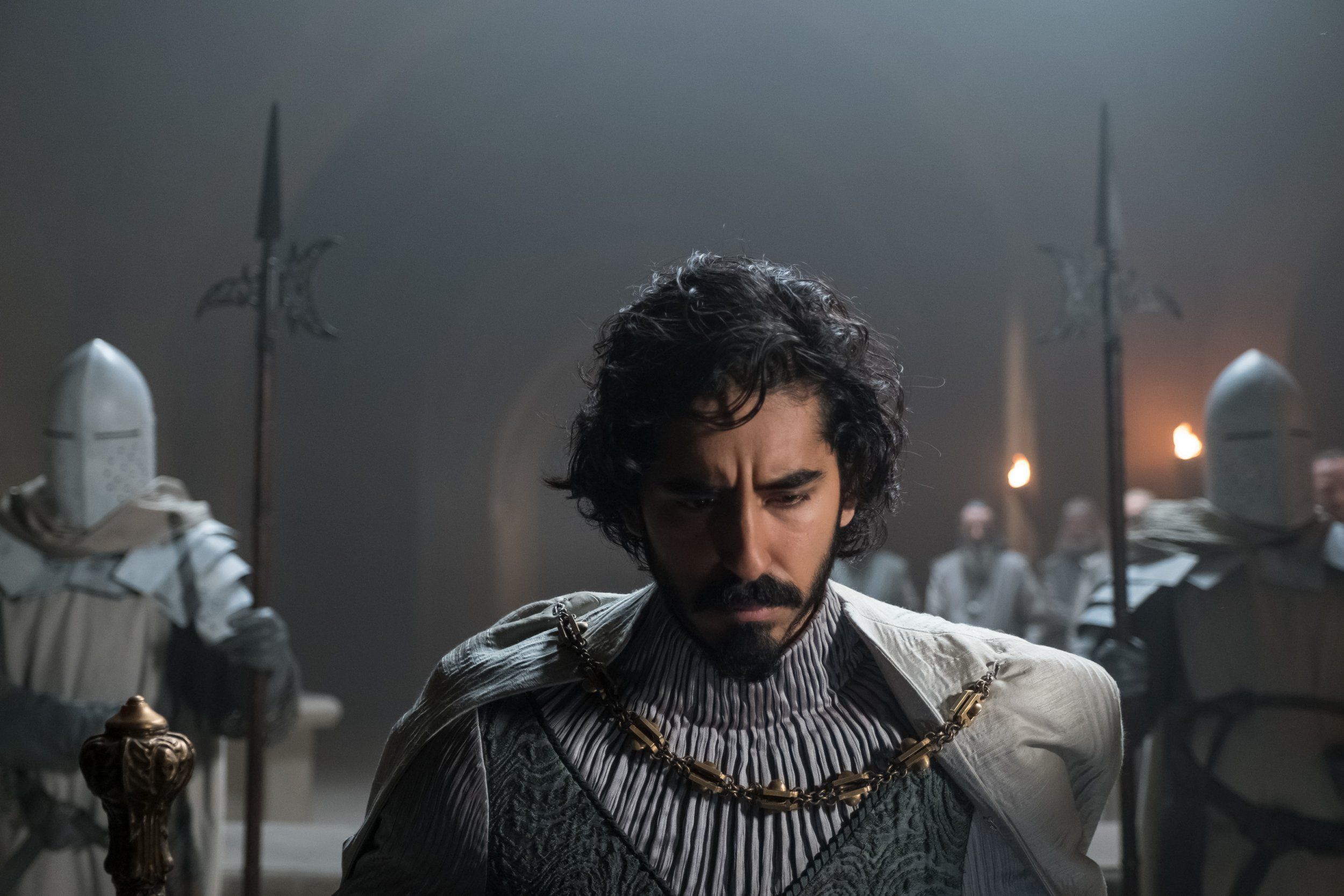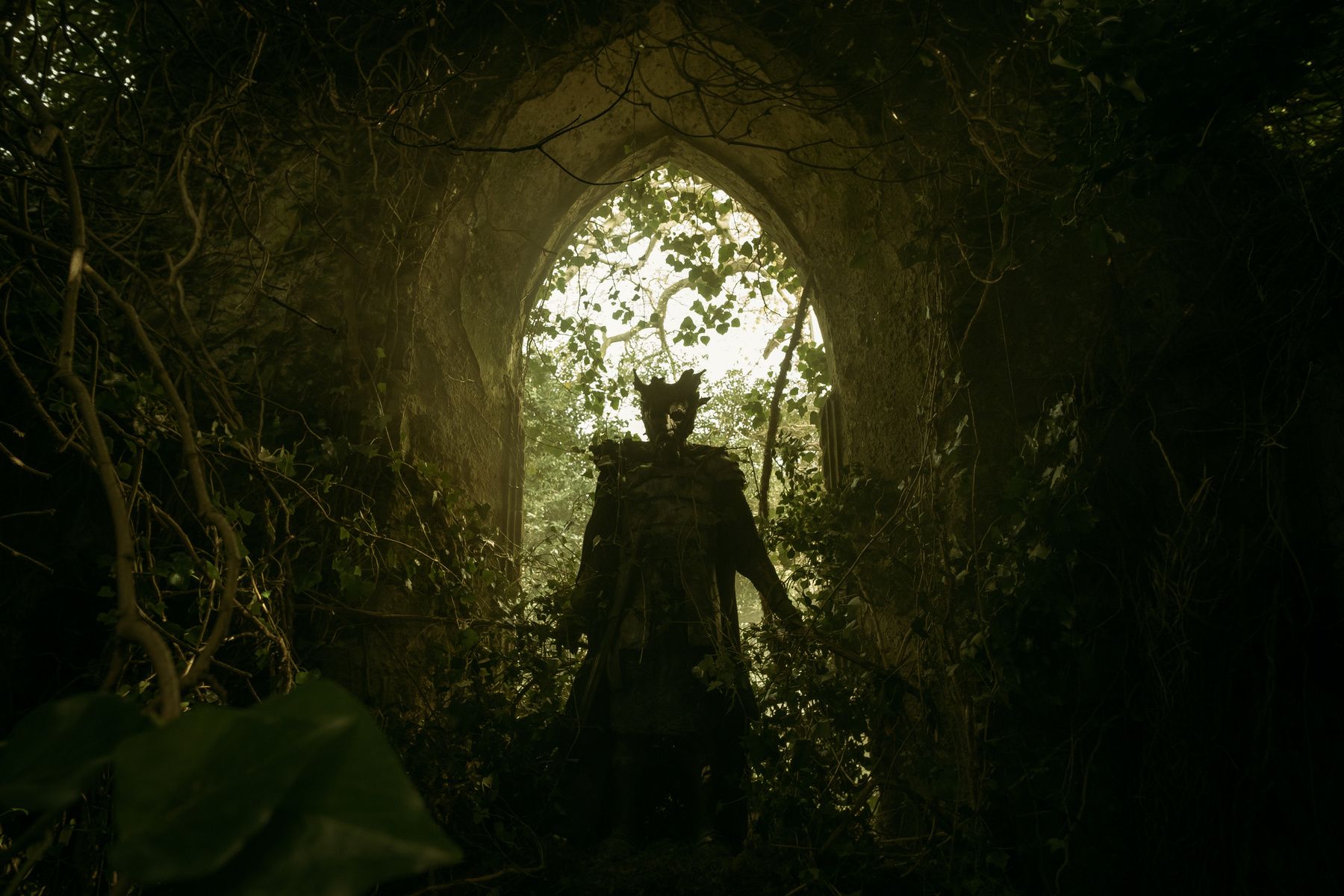FromSoftware’s action RPG titles are mystifying and rife with discourse in-and-around their growing communities of players and fans. After having explored cosmic horror in Bloodborne, and supernatural Japanese myth in Sekiro: Shadows Die Twice, Elden Ring marks FromSoftware’s first return to the medieval high fantasy genre since Demon’s Souls and Dark Souls. FromSoftware’s storytelling and world-building is distinguished apart from other RPGs, but there is a recent film that resembles similar storytelling employed in games such as Elden Ring.
A24's penchant for eerie, suspenseful atmospheres pairs perfectly with David Lowery’s The Green Knight, which is a masterclass in cinematography and suggestive themes set in high fantasy. Furthermore, The Green Knight’s lack of action accentuates its granular character study and upends the common trope of medieval battles in fantastical settings. The Green Knight is not only aesthetically comparable to FromSoftware’s high fantasy entries, but is also comparable thematically, narratively, and in terms of what characters are encountered and quests that are embarked upon.
The Green Knight's World-Building and Scope Resembles Elden Ring's Open World
The Green Knight’s mountainous and woodland environments are most comparable to Elden Ring’s Lands Between for its open-world scale and scenic vistas that are unfamiliar to either the character or the player. Dark Souls, rather, features a restrictive linearity that does not afford players the same sense of exploration.
FromSoftware’s world-building produces level designs that feel wholly interconnected and part of a lived-in, yet enigmatic environment. Sparse storytelling leaves certain knowledge up to interpretation or character interactions, which are often obscure. Characters are not particularly surprised to see such remarkable and otherworldly creatures or entities, and this is perhaps commonplace or widely known and accepted as part of their high fantasy setting.
The Green Knight resists the temptation to pepper in dragons or other such beings that are popularly employed in other high fantasy settings, and instead uses deliberately authentic imagery and beings that are unique to The Green Knight. Meanwhile, Dark Souls demonstrates that Western fantasy was heavily influential in its environmental and enemy designs, but made it memorable and distinctive still.
Moreover, The Green Knight's world invites character interaction the same way that Elden Ring's does. Gawain assisting the spectral Winifred with the retrieval of her deceased body’s skull is an example of a kind of side quest that the character partakes in, and not without asking for something in return for the deed. Gawain is rewarded with the recovery of the Green Knight’s axe, which had been stripped from him along with his other possessions after the Scavenger had ambushed him, looted him, and left him tied up in the woods to die.
The Green Knight is a Soulslike RPG Without Combat
Soulslike titles have action at their core, but it is arguable that combat is less impactful or considerable than the iconic bosses and boss fights that combat is oriented toward. Dark Souls’ combat, for example, is rudimentary at its base; players somersault around in rapid succession, given that they have a light enough equipment load, to dodge incoming attacks. Players then look to exploit a gap in the boss’ attack pattern or string of combined strikes and land a blow before returning to their evasive maneuvers.
This process continues until the boss’ health bar is whittled down and depleted completely. The Green Knight’s primary antagonist and chiefest boss is the eponymous knight himself, who is depicted based upon his unique visual stature, not unlike Hollow Knight’s titular main antagonist, or perhaps one of The Order of No Quarter’s knights from Shovel Knight.
The Green Knight’s sound design is immersive and characterizes him as a humanoid tree-like creature whose essence affects his surroundings; such as the lush green flora that instantly sprouts where he places his axe, or the same lush overgrowth that saturates the knight’s Green Chapel. The Green Knight is more of a gimmick boss, but nonetheless one that is its own first test to determine if Gawain’s wits and comprehension of the knight’s Christmas game are greater than his desire to be heralded as a legend.
The most apparent difference between The Green Knight and Soulslike titles is that Soulslikes contain many more hostilities in every area. FromSoftware’s games are action-RPGs, not poignant character assessments. It is necessary to emphasize an element of combat that is more frequent in order for players to level-up stats with associable souls, blood echoes, or runes that act as an XP currency harvested from enemies.
Common Soulslike Features and Tropes Perceivable in The Green Knight
The idea of facing an undoubtedly imposing threat and still mustering the courage to face it stalwartly is a concept all Soulslike players must be familiar with. Soulslike titles feature fearsome foes and players must still go toe-to-toe with them against unfathomable odds, which is indeed what Gawain does at the end of The Green Knight, despite knowing the inevitability of his tragic fate.
Similarly, players know they will perish often in Soulslike games while they attempt to learn a boss' patterns. Gawain's arc portrays what the player's experience would be like if they refused to face a boss out of fear and reluctance of death. Of course, Gawain only has his one life to cling to, as opposed to the player’s infinite retries.
Soulslike games embellish sparse storytelling with fantastical imagery baked into their obscure lore. While some fans wish to comprehend each and every facet or decision made in the lore, it is oftentimes better explored than explained. Even if NPC dialogue and certain themes are relatively simple to interpret, the fact that the lore is not explicitly or redundantly explained to players makes it feel like a rich discovery they are making as they journey through unfamiliar lands as a wary pilgrim.
The Green Knight’s Scavenger, played by Barry Keoghan, is an example of the innumerable instances of initially unassuming and antagonistic NPC characters who wish to deceive the player or do them harm. The first character on any FromSoftware fan’s mind will be Patches, a mischievous character who appears in every FromSoftware Souls game besides Dark Souls 2, where in his place is an NPC named Mild-Mannered Pate.
Patches, like The Green Knight’s Scavenger, demonstrates how naive kindness can be exploited, and that trust should be reserved in some circumstances. Many FromSoftware games instill this idea thoroughly with their NPCs; for example, players are optionally tasked with making hospitable arrangements for Bloodborne’s seemingly untrustworthy and malicious NPCs at either the Oedon Chapel or Iosefka’s Clinic.
Many other interpretations and comparisons could still be drawn between The Green Knight and Soulslikes for the many narrative and environmental properties they share. While fantasy is hardly a rare genre to see in contemporary media, The Green Knight and Elden Ring perpetuate what is most fascinating about the genre at the same time as they respectively revitalize it and make it feel fully unique.
Elden Ring is available now for PC, PS4, PS5, Xbox One, and Xbox Series X.




